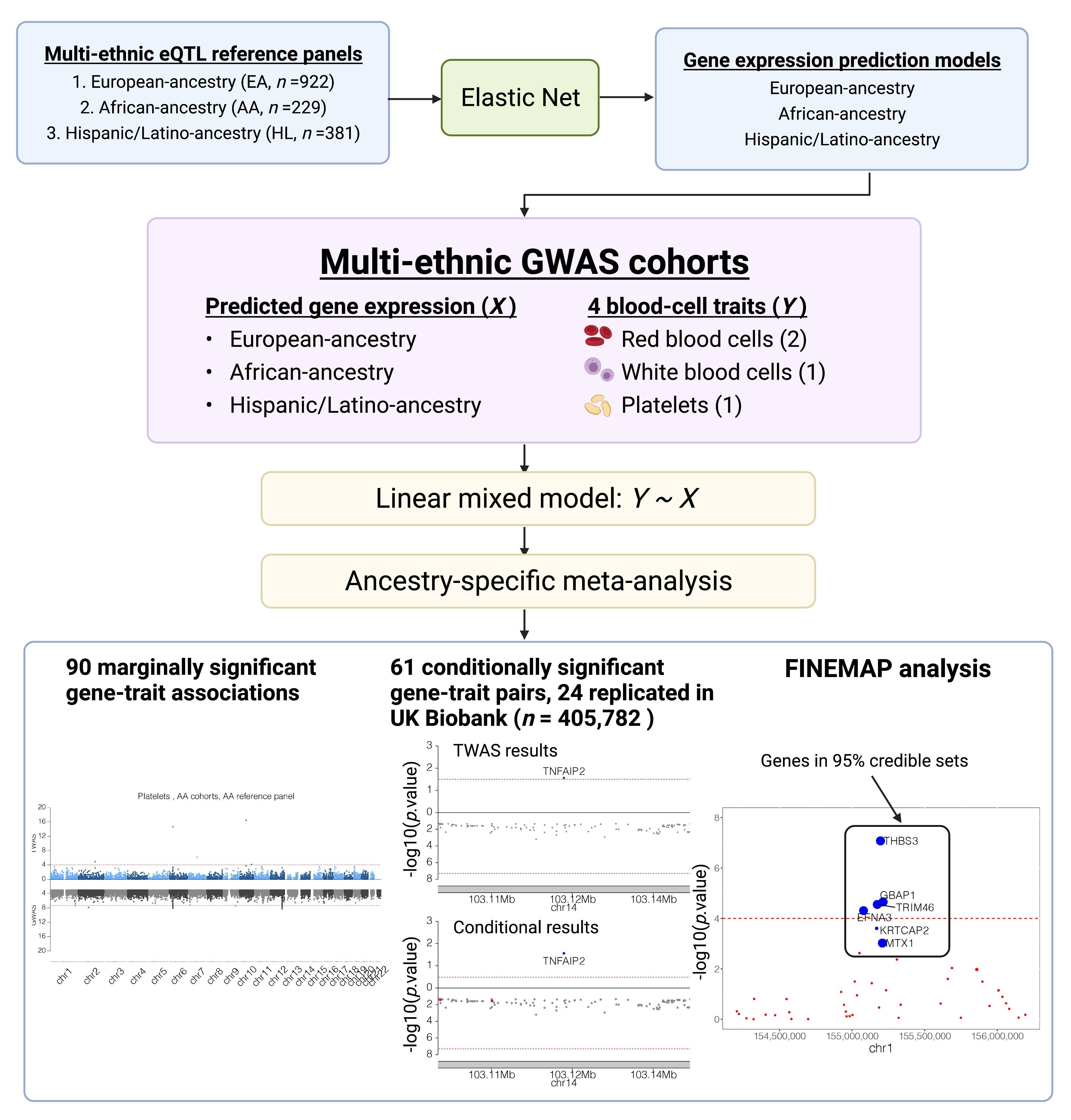Abstract
Introduction Thousands of genetic variants have been associated with hematological traits, though target genes remain unknown at most loci. Moreover, limited analyses have been conducted in African ancestry and Hispanic/Latino populations; hematological trait associated variants more common in these populations have likely been missed.
Materials and Methods To derive gene expression prediction models, we used ancestry-stratified datasets from the Multi-Ethnic Study of Atherosclerosis (MESA, including n = 229 African American and n = 381 Hispanic/Latino participants, monocytes) and the Depression Genes and Networks study (DGN, n = 922 European ancestry participants, whole blood). We then performed a transcriptome-wide association study (TWAS) for platelet count, hemoglobin, hematocrit, and white blood cell count in African (n = 27,955) and Hispanic/Latino (n = 28,324) ancestry participants.
Results Our results revealed 24 suggestive signals (p < 1 × 10−4) that were conditionally distinct from known GWAS identified variants and successfully replicated these signals in European ancestry subjects from UK Biobank. We found modestly improved correlation of predicted and measured gene expression in an independent African American cohort (the Genetic Epidemiology Network of Arteriopathy (GENOA) study (n = 802), lymphoblastoid cell lines) using the larger DGN reference panel; however, some genes were well predicted using MESA but not DGN.
Conclusion These analyses demonstrate the importance of performing TWAS and other genetic analyses across diverse populations and of balancing sample size and ancestry background matching when selecting a TWAS reference panel.
